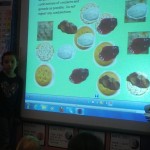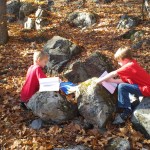September14
It seems that we have all been together so long now! We have been learning about how people work together and have fun together in a community and that we all have responsibilities to ourselves and others in a community. We are just one big learning community and it is important to remember how to get a long and how to best work with other members so that we are all safe, happy, and successful.
Spelling/Phonics
This week, we reviewed that every word must have a vowel and every syllable in a word contains a vowel sound spelling. We focused on words that contain consonant digraphs. A consonant digraph is a spelling made of two or more consonants that represent one unique sound, such as /sh/ spelled sh or /th/ spelled th. Consonant digraphs contrast with consonant blends, in which the sound of each letter is distinctly heard. The digraphs this week we practiced were th, sh, ch, tch, wh, kn, wr, and ph.
For spelling practice, try playing hangman, create word scrambles, or make word finds with sounds that have these spelling patterns.
How We Organize Ourselves
Central idea: People create systems to meet their needs and wants.
We discussed the meaning of systems and how we are going to focus on people systems rather than environmental or technological ones. Then, we brainstormed a list of needs and wants and discussed the difference between the two.
We also watched a 17 minute video about Community and Citizenship to aid in our discussions about systems with people. Below is the video link if you would like to watch or your child would like to watch again.
Citizenship in the Community
We have also been talking about how government officials are chosen and students are participating in a similar system to apply for and assign jobs in the classroom to experience the process and how everyone has different roles and responsibilities in a system. Ask you child what job he/she applied for.
Reading
We have continued reviewing strategies to read tricky words from 1st grade. These are strategies that are important as we are constantly encountering new words when we read everyday.
While conferencing with students individually, I have introduced some strategies to help with reading fluency. the first step after reading the words accurately is to back up and reread. Yes, BACK UP AND REREAD. Read it like you would talk, not like a robot. Have your child practice this strategy on one or two pages while reading so that he/she can be an expert on that page and read through it fluently.
Student Portfolios
Every student has their own portfolio. This is in the form of a binder and is where they will save much of their work. Portfolios will stay at school but you are welcome and encouraged to check in and Students will be very familiar with the contents (since it is their work and they have put it in them). These portfolios will be used in the spring student -led conferences. At the end of the year, most work will go home and a few pieces will go into the back and follow them through fifth grade to show progress in different areas such as reading, writing, math, social studies, science, goal setting, and specials.
Students reflected on their very first writing piece and put it in their portfolios. They had to read it and think about what they were most proud of in their writing and write it on a reflection form. Over the course of the year, students will be reflecting on many aspects of their learning and their work to improve.
Writing
Another activity that we did was to look at a picture and tell a story about it to a partner. then the two partners needed to link their pictures (which looked like they had nothing to do with each other) through one story. Students were very creative and did a lot of what good writers do. they started with creative and interesting beginnings, added interesting details, used transition words like next and then, and put events and details in a sequence that made sense. After they took all the pictures, looked more closely at details, and put them in order using quality conversations as they were all from a picture book called Zoom by Istvan Banyai.
 Zoom by Istvan Banyai
Zoom by Istvan Banyai
Math
This week, students worked with counting money in dollars and cents, giving back change from $1.00, subtracting larger numbers up to 100 using the number grid, and some new math games to practice math skills. We also played some interactive math games using the InterWrite board. To access more of these games go to my Wikispace and click on Interactive Math Links from the side bar menu. Games are all organized by skill.



















